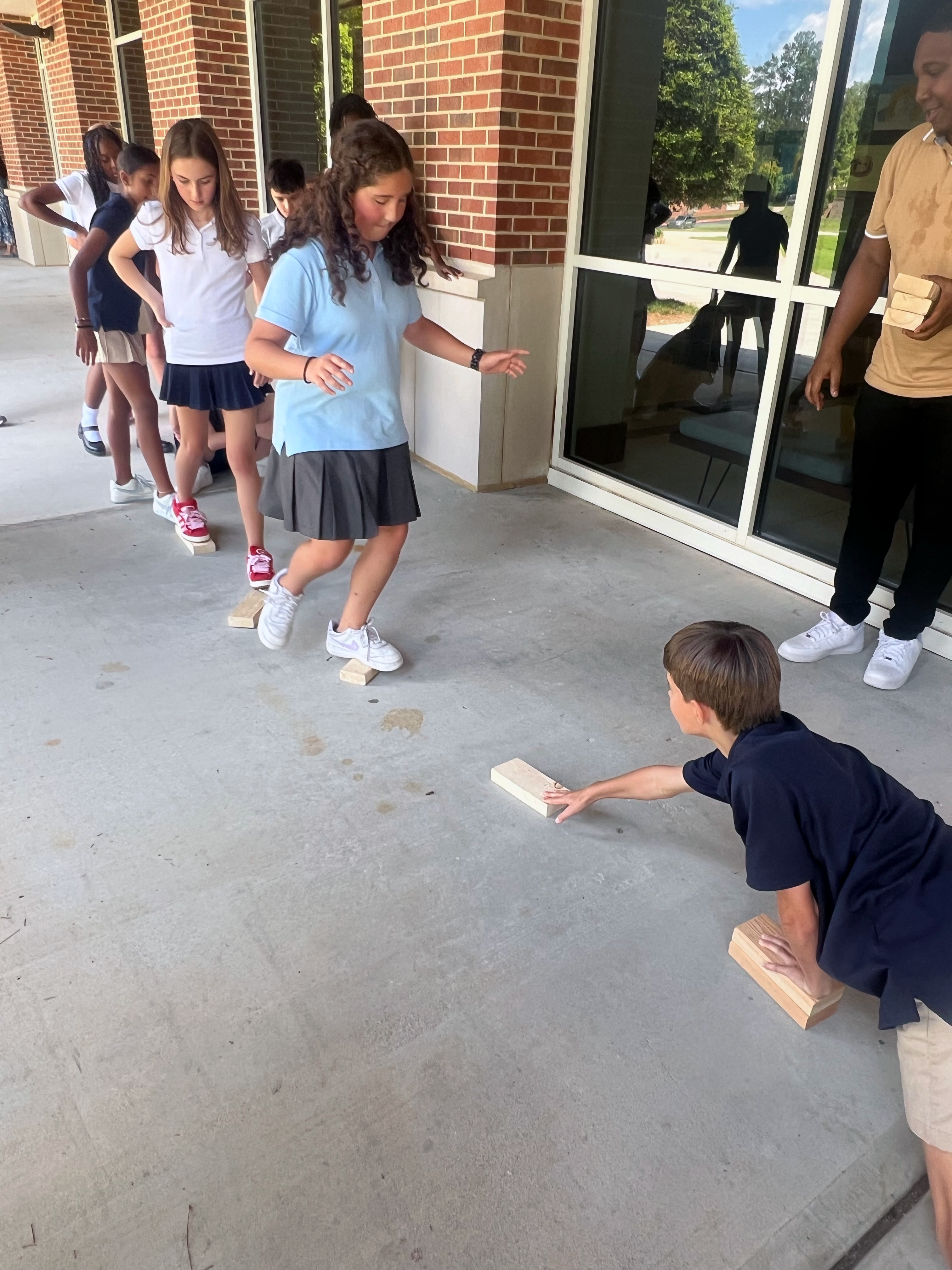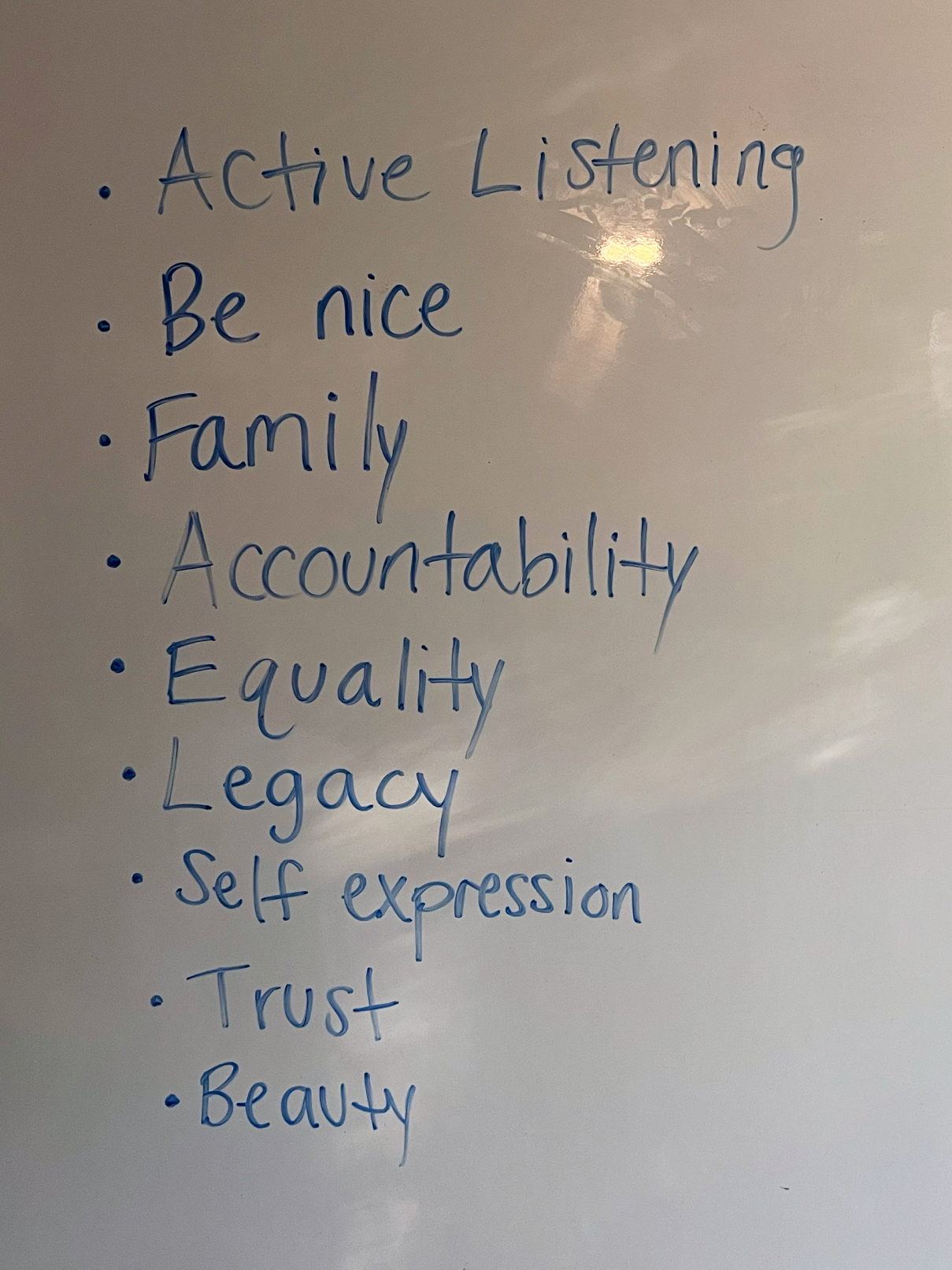In the Middle School, the concept of community is more than just a word—it’s a deeply ingrained part of the student experience, intentionally designed to foster a sense of belonging and guide students on their Journey of Purpose. Mount Vernon has crafted Community time as a cornerstone of its Middle School program, ensuring that students are supported, connected, and engaged throughout their day.
Many might be tempted to use the term “home room” to describe the Community experience — but it’s a carefully curated experience bookending each day and providing a touchpoint in the middle of each day for every Middle Schooler. Students start their day with 30 minutes of Community, reconnect during a midday GTD (Getting Things Done) session, and close the day together. This intentional structure allows students to ground themselves, check in with peers and faculty, and prepare for the day ahead.
To gain deeper insight into how Community time shapes the Middle School experience, we sat down with two dedicated members of the Middle School team: Jordan Greenleaf, a new faculty member who also serves as the Varsity Head Coach for Girls’ Basketball, and Ashley Tabor, a veteran educator who has been with Mount Vernon for nearly a decade and is a beloved Middle School coach.
Building Relationships Through Engagement
For Jordan Greenleaf, who is new to Mount Vernon, Community time has been an invaluable opportunity to connect with students on a personal level. “When I subbed for a Community class, we had a lot of engagement,” Jordan shared. “Students voiced their opinions about starting school, what they liked, what they were concerned about. It gave me a chance to learn about their interests, their sports, and their extracurricular activities. It’s a way for us to engage with them on their level and help them throughout the year.”
This engagement is central to the Community experience. By offering a safe space where students can build relationships, find a a trusted advisor or adult, express their thoughts, ask questions, and share their experiences. Mount Vernon fosters an environment where every student feels seen and heard.
Supporting Sixth Graders: A Gentle Transition
For sixth graders, who are new to the complexities of Middle School, Community time is particularly crucial. The transition from Lower School, where they had one primary teacher, to a more varied schedule can be overwhelming. Community time provides a consistent touchpoint where they can ask questions, find their way, and feel supported.
As Ashley Tabor explains, “Sixth graders often worry about getting lost or not knowing what class to go to. Community time allows them to take a moment and ask those questions, so they aren’t wandering around the school unsure of where they’re supposed to be. It’s about making sure they know they’re not alone.”
Laniey Grafton, a Grade 6 student described Community like this, “Being with the people you love and working together as a team.” Mathew Sveda, a fellow classmate, shared a similar thought, [Community is] having fun and learning about those in your class.”
Each grade level at Mount Vernon Middle School approaches Community time with a unique focus, tailored to the developmental needs of the students.
- Eighth Grade: Students engage in themed discussions throughout the week, focusing on leading including “Mindful Monday,” and “Thoughtful Thursday.” These conversations help students explore purpose, and dialogue skills, building a foundation for thoughtful engagement and personal growth.
- Seventh Grade: Inspired by Phyllis Fagell’s book “Middle School Super Powers,” seventh graders explore their values and superpowers, writing letters to their future selves that they revisit at the end of the year. This reflective practice helps students understand their journey and recognize their growth. Seventh grader, Milo Von Viergegge, shared [Community is] “a space where you can grow and feel safe.”
- Sixth Grade: The focus is on orientation and adjustment through the lens of the Mount Vernon attributes: Self-leadership, Empathy, Adaptability, Integrity, Curiosity, Creativity and Grace. Students discuss practical aspects of Middle School life, such as navigating schedules and managing lockers. Faculty members encourage students to celebrate small victories, like successfully opening a locker or finding their next class, reinforcing a sense of accomplishment and confidence. Grace Ahern, shared her Grade 6 experience in Community is like “a family system and a place to support one another”
An integral part of the Community experience is the buddy system, especially for sixth graders. “Whether it’s a fellow student, a coach, or a floating faculty member, every student has a buddy,” Ashley Tabor notes. “You’re never alone at Mount Vernon.”
This system helps new students navigate the challenges of Middle School and fosters a supportive environment where they can build friendships that last throughout their journey at Mount Vernon.
Creating a Safe Space for Growth
Community time is not just about academics; it’s about creating a space where students can be themselves, let their guard down, and form meaningful connections. As Ashley shares, “Friendships formed in Community have strong foundations because these moments are intentionally carved out with faculty prompting questions and making it a safe space. This is our friendship family.”
The intentional design of Community time at Mount Vernon Middle School ensures that every student is part of a supportive network, where they can grow, explore their purpose, and build lasting relationships. Teddy Avgerinos, Grade 8, shared Community is, “a place to gather together.” and Viviene Serpas, summarized Community in one word, “family.”
Looking Forward: The Journey Continues
As the school year progresses, the emphasis on Community will continue to guide students on their Journey of Purpose. The seeds planted during these intentional moments will grow, helping students understand their value, develop their strengths, and make an impact on those around them.
At Mount Vernon Middle School, Community is more than just a period on the schedule—it’s a vital part of the fabric of the school, empowering students to thrive, connect, and embark on their Journey of Purpose.






